Digital Natives by Matthew Plummer Fernandez
Product news: a watering can and an action figure were among the everyday objects scanned and distorted by designer Matthew Plummer Fernandez to create these faceted and richly coloured 3D printed vessels.
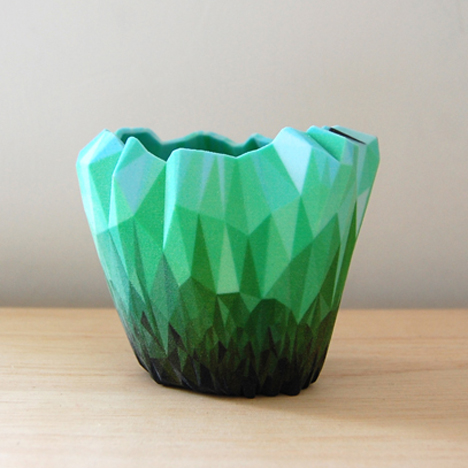
The objects are based on 3D scans of a watering can, a Power Ranger action figure, a spray bottle, a dolphin-shaped lamp and a 19th century vase.
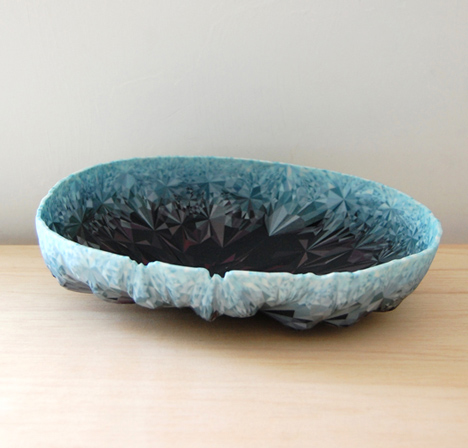
The designer used custom-made software to subject the scans to algorithms that stretch and distort the data into new forms, before sending the altered files to be 3D printed with colourless sand particles and tinted resin.
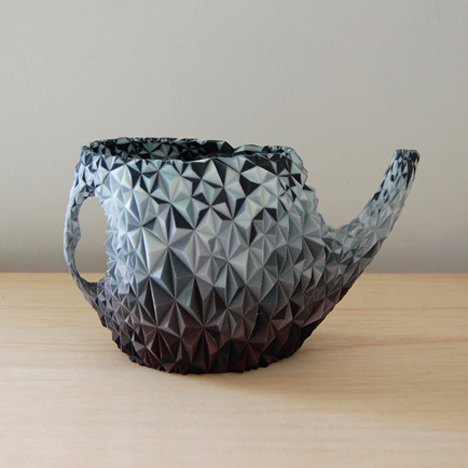
"The algorithms basically deform the shape by mathematically repositioning its set of coordinates," Plummer Fernandez told Dezeen. "Different equations create different effects – the simplest are simple multiplications to stretch an object, while more advanced formulas can twist or smooth the object or go as far as adding new features such as spikes."
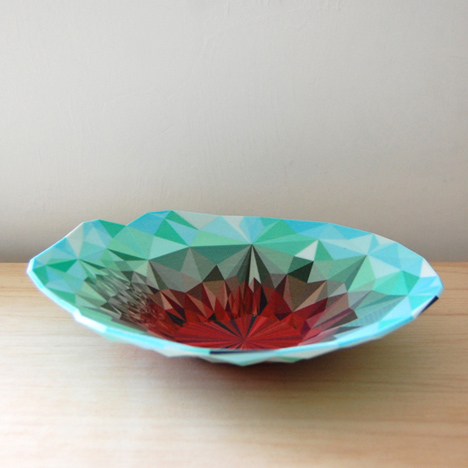
"The programming is a key part of what I do," he added. "Instead of using existing programs such as Rhino or Autocad products, I create my own 3D editing tools. These are written in Processing, an open source platform for creative coding. I simply use them to shape my objects and save them as 3D printable files."
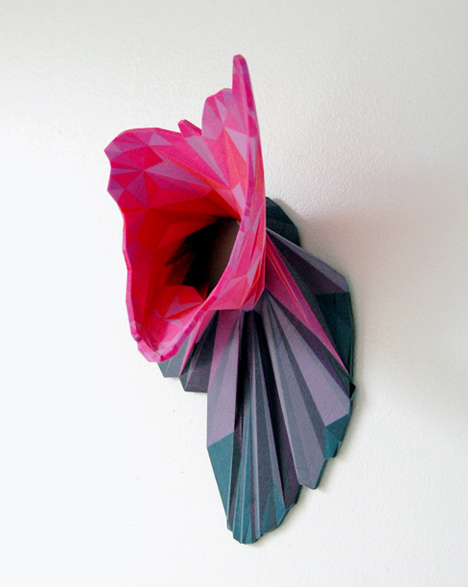
Plummer Fernandez was born in Colombia and now lives in the UK, where he graduated from the Royal College of Art's Design Products MA in 2009.
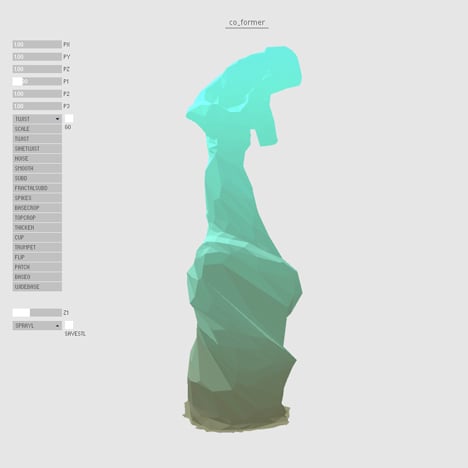
The Digital Natives collection will be presented at the 3D Print Show which takes place from 19 to 21 October in London.
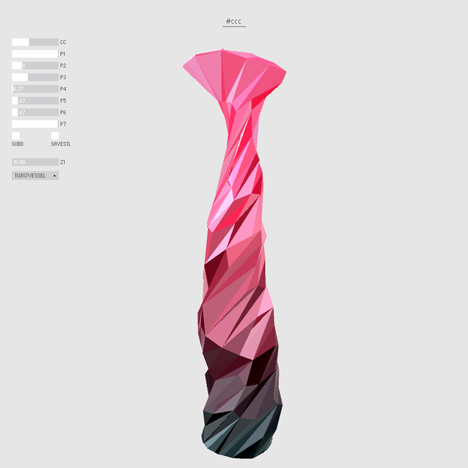
We recently reported on the news that gun enthusiasts in the U.S. are using 3D printers to make their own weapons – see all our stories about 3D printing here.
Here's some more information from the designer:
Digital Natives
Everyday items such as toys and detergent bottles are 3D scanned using a digital camera and subjected to algorithms that distort, abstract and taint them into new primordial forms that begin to resemble early human artefacts. In some cases only close inspection reveals traces inherited from their physical predecessors. These are then 3D printed in colour resin/sandstone.
I am currently at the beginning of my ongoing 3D scan->remix->print-in-colour process development. These objects hopefully help capture the process in its early stages, whilst the algorithms and forms are still fairly crude, yet appreciable.
The algorithms are executed within two software 3D interfaces; co_former for transforming shape, and #ccc (colour co-creator) for generating colour. These create files ready for 3D printing in colour. Done with the open source programming language Processing and libraries Hemesh, ControlP5, and Toxiclibs.